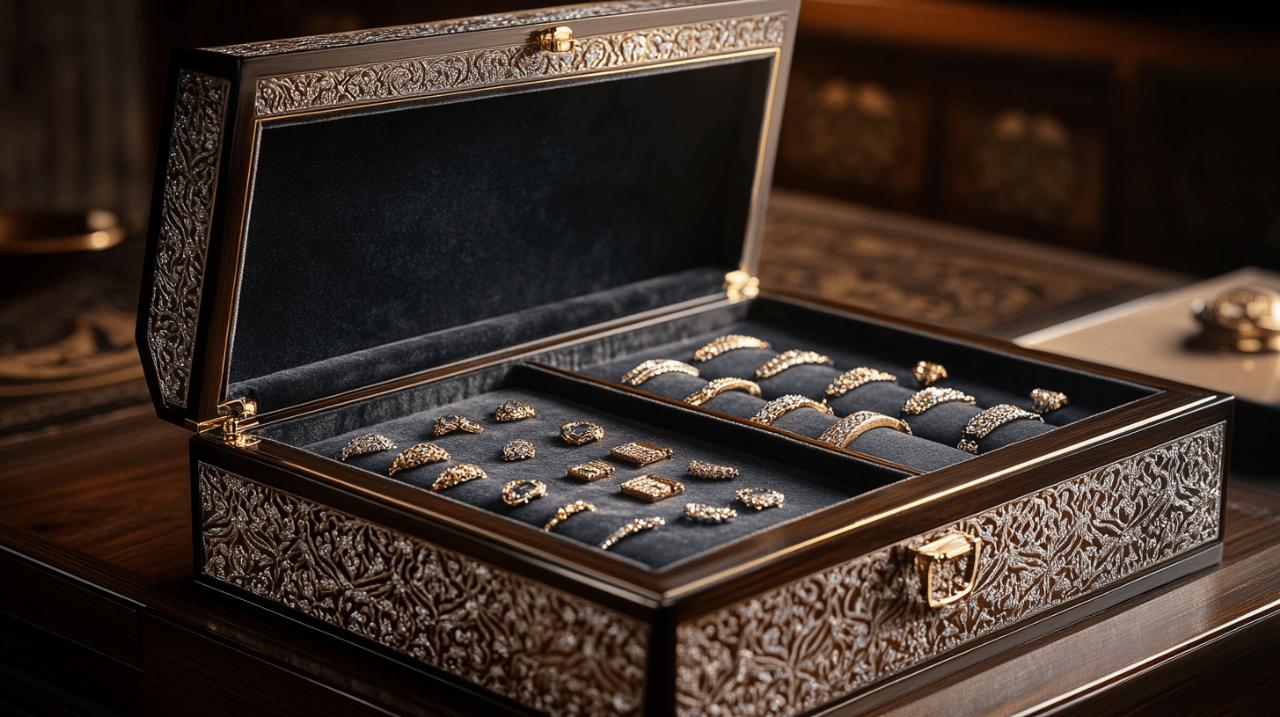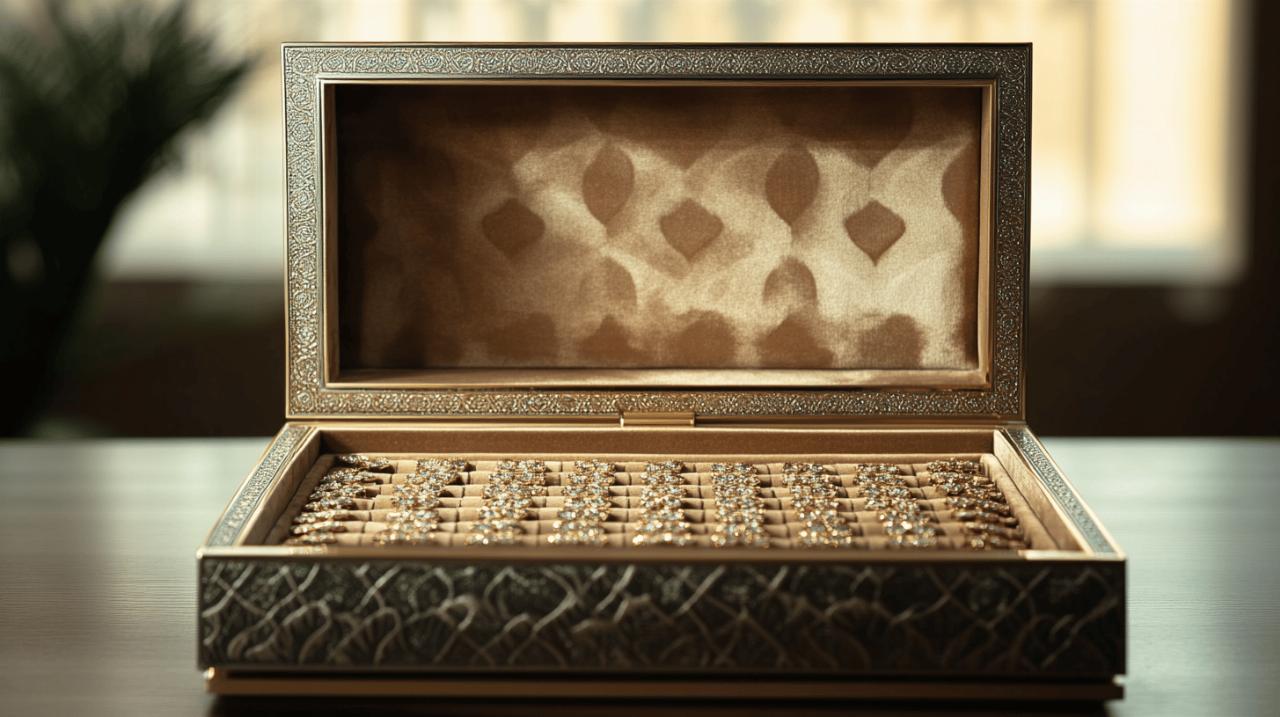In the world of fine jewellery, the experience extends far beyond the sparkle of a gemstone or the lustre of precious metal. The manner in which a piece is presented has become an integral part of the luxury experience itself, transforming a simple purchase into a memorable occasion. As consumers become increasingly conscious of their environmental impact, the packaging industry has responded with innovative solutions that marry elegance with ecological responsibility. This evolution reflects a broader shift in consumer values, where sustainability and sophistication are no longer seen as opposing forces but as complementary aspects of a brand's identity.
The Transformative Power of Packaging in the Jewellery Experience
From Transaction to Treasured Moment: The Role of First Impressions
The moment a customer receives their jewellery marks the beginning of a relationship that extends beyond commerce. Research indicates that approximately seventy-eight per cent of consumers now factor sustainability into their purchasing decisions, suggesting that packaging choices can significantly influence brand perception. The initial encounter with a beautifully crafted box or pouch creates an emotional connection that resonates long after the transaction is complete. This tactile experience communicates volumes about a brand's attention to detail and respect for both the product and the person receiving it. When that first impression also reflects environmental consciousness, it demonstrates a thoughtfulness that modern consumers actively seek out.
Elevating the unboxing experience through thoughtful design
The ritual of unwrapping a piece of jewellery has become an event worthy of documentation on social media platforms, with countless individuals sharing their unboxing experiences online. This phenomenon has elevated packaging from a purely functional necessity to a crucial element of brand storytelling. The materials selected, the colours employed, and the structural design all contribute to a narrative that can either enhance or diminish the perceived value of the jewellery itself. Minimalist design principles have gained considerable traction in recent years, not only for their aesthetic appeal but also for their waste-reduction benefits. By focusing on essential elements and eliminating superfluous materials, brands can create packaging that feels both luxurious and responsible, addressing the preferences of environmentally aware consumers whilst maintaining an air of sophistication.
Material Choices and Brand Values: Selecting the Right Packaging for Your Jewellery
Balancing aesthetic appeal with sustainable materials
The selection of materials represents one of the most visible manifestations of a brand's commitment to environmental stewardship. Recycled paper has emerged as a particularly versatile option, offering numerous design possibilities whilst significantly reducing the carbon footprint associated with packaging production. Kraft paper, with its natural texture and warm tones, provides a rustic elegance that appeals to consumers seeking authenticity. For brands aiming for a more refined aesthetic, recycled plastics and metals can be transformed into sleek, modern containers that rival their virgin counterparts in appearance. The paperboard jewellery box market alone is projected to expand from eighty-four point five million pounds in twenty twenty-four to one hundred eighteen point six million pounds by twenty thirty-four, reflecting the growing demand for sustainable alternatives. Natural fibres such as organic cotton and hemp offer additional possibilities, particularly for pouches and soft packaging elements that complement harder outer containers.
Matching Packaging Design to Jewellery Style and Brand Identity
The relationship between packaging design and the jewellery it contains should be one of harmonious complementarity rather than competition. Delicate pieces such as earrings require protection that is both secure and appropriately scaled, whilst statement rings might benefit from packaging that echoes their boldness. Colour psychology plays a significant role in this equation, with certain hues evoking specific emotional responses that can reinforce brand messaging. A commitment to sustainability can be communicated through earthy tones and natural textures, whilst more vibrant palettes might appeal to brands targeting younger demographics. The younger generation, in particular, demonstrates strong preferences for sustainable products, with approximately seventy-three per cent actively seeking out environmentally responsible options. This alignment between packaging aesthetics and product characteristics creates a cohesive brand experience that resonates with target audiences and strengthens customer loyalty over time.
Sustainability meets sophistication: eco-friendly packaging solutions
The growing demand for environmentally conscious packaging
 Consumer awareness of environmental issues has reached unprecedented levels, with roughly sixty per cent of individuals expressing concern about global warming and its consequences. This heightened consciousness has translated into tangible shifts in purchasing behaviour, with approximately seventy-three per cent of consumers willing to modify their lifestyles to support planetary health. The jewellery industry has responded to these changing priorities by exploring innovative materials and production methods that reduce environmental impact without compromising on quality or presentation. Biodegradable alternatives such as corn starch packaging and bamboo fibre offer compelling substitutes for traditional plastics, breaking down naturally after disposal rather than persisting in landfills for centuries. Bioplastics derived from plant sources represent another promising avenue, providing the durability and clarity of conventional plastics whilst offering improved end-of-life options. The eco-packages market overall is forecast to expand from two hundred seventy-one point eight six billion pounds in twenty twenty-three to over three hundred ninety-three billion pounds by twenty twenty-eight, demonstrating the commercial viability of sustainable packaging solutions across industries.
Consumer awareness of environmental issues has reached unprecedented levels, with roughly sixty per cent of individuals expressing concern about global warming and its consequences. This heightened consciousness has translated into tangible shifts in purchasing behaviour, with approximately seventy-three per cent of consumers willing to modify their lifestyles to support planetary health. The jewellery industry has responded to these changing priorities by exploring innovative materials and production methods that reduce environmental impact without compromising on quality or presentation. Biodegradable alternatives such as corn starch packaging and bamboo fibre offer compelling substitutes for traditional plastics, breaking down naturally after disposal rather than persisting in landfills for centuries. Bioplastics derived from plant sources represent another promising avenue, providing the durability and clarity of conventional plastics whilst offering improved end-of-life options. The eco-packages market overall is forecast to expand from two hundred seventy-one point eight six billion pounds in twenty twenty-three to over three hundred ninety-three billion pounds by twenty twenty-eight, demonstrating the commercial viability of sustainable packaging solutions across industries.
Transforming recycled materials into elegant brand statements
The perception that recycled materials inherently lack refinement has been thoroughly dispelled by recent innovations in sustainable packaging design. Recycled metals, particularly aluminium, can be repeatedly reprocessed without degradation of quality, making them ideal for premium jewellery containers that customers will treasure and reuse. Upcycled fabrics and textile remnants can be transformed into luxurious pouches that offer both protection and aesthetic appeal whilst diverting waste from disposal streams. Even agricultural waste materials are finding new life as packaging components, with mycelium-based inserts and cushioning elements providing excellent protection for delicate pieces. These materials not only reduce reliance on virgin resources but also tell a compelling story about circular economy principles and responsible resource management. Brands that successfully communicate the provenance and environmental benefits of their packaging materials can strengthen their market position, particularly among the sixty-six per cent of consumers who express preference for products presented in green packaging. The integration of eco-friendly inks derived from algae, water or soy further reduces the environmental footprint of printed packaging elements, addressing even the smaller contributors to carbon emissions.
Personalisation and brand connection: creating lasting impressions through custom packaging
The Impact of Bespoke Touches on Customer Loyalty
The addition of personalised elements to packaging transforms a standardised transaction into an individualised experience that customers are likely to remember and share. Custom touches need not be elaborate or resource-intensive to be effective; even simple additions such as a carefully chosen ribbon or a handwritten note can significantly enhance the perceived value of a purchase. Reusable packaging designs encourage customers to maintain a physical connection with a brand long after the initial purchase, with beautifully crafted boxes finding second lives as storage for treasured items or decorative elements in personal spaces. This extended interaction with brand imagery and messaging reinforces recognition and builds emotional attachment over time. Some brands have embraced refillable packaging concepts, offering customers the opportunity to return with subsequent purchases and receive their new jewellery in the same cherished container. This approach not only reduces waste but also creates a ritualistic aspect to the shopping experience that fosters loyalty and repeat business. Studies suggest that between four and seven per cent of consumers are willing to pay a premium exceeding ten per cent for products featuring sustainable packaging, indicating that thoughtful design choices can support premium pricing strategies.
Strategic Packaging as a Tool for Brand Storytelling and Recognition
Every aspect of packaging design represents an opportunity to communicate brand values and distinguish a business within a competitive marketplace. The incorporation of logos and distinctive colour schemes ensures immediate visual recognition, whilst the selection of sustainable materials and ethical production methods conveys deeper messages about corporate responsibility and forward-thinking leadership. Certifications such as those from the Forest Stewardship Council or B Corporation status provide third-party validation of environmental claims, helping brands avoid accusations of greenwashing whilst building consumer trust. The finishing techniques employed, from embossing to the application of eco-friendly foils, add tactile dimensions that engage multiple senses and create memorable interactions. Digital printing technologies have evolved to offer both environmental advantages and design flexibility, allowing for smaller production runs and customisation options that were previously economically unviable. As packaging regulations become increasingly stringent, particularly within the European Union, brands that proactively adopt sustainable practices position themselves advantageously for future compliance requirements. The strategic integration of packaging design into broader marketing narratives enables jewellery brands to articulate their unique identities whilst demonstrating leadership in environmental responsibility, ultimately contributing to enhanced brand perception and commercial success in an increasingly conscious marketplace.
